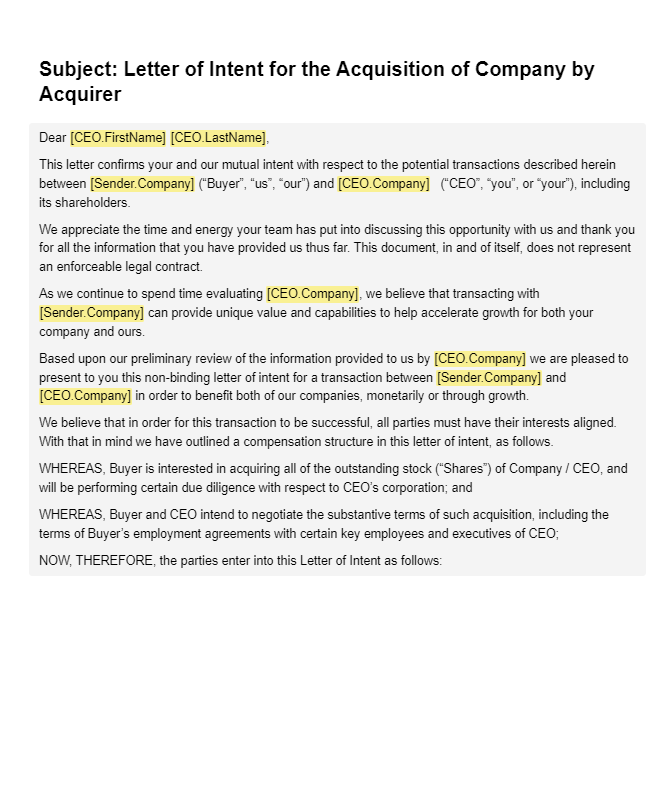Letter of Intent Template
Whether you're a freelancer, independent contractor, or business entity, understanding and correctly drafting a Letter of Intent is crucial for initiating business agreements or projects. To access a template for a Letter of Intent for free, click the button given below. Drafting a comprehensive Letter of Intent is vital for outlining the preliminary agreements between parties and setting the stage for formal negotiations, ensuring clarity and mutual understanding from the onset.
Save time, avoid headaches, and ensure compliance effortlessly with current version of Letter of Intent Template. With our streamlined process, you'll have your form in hand within moments, giving you the peace of mind to focus on what truly matters – your business.

Understanding the Form
Stay Compliant, Stay Secure: Secure Your Letter of Intent Today
Are you tired of endless paperwork and bureaucracy when it comes to forms like this?It's frustrating and time-consuming, isn't it? Spending precious hours navigating through confusing websites, waiting in long queues, or worse, risking penalties for non-compliance.But what if there was a way to bypass all that hassle? Imagine having your downloadable Letter of Intent template at your fingertips, ready to download instantly with just a click.The Letter of Intent (LOI) for the year 2024 is a preliminary agreement outlining the key points of a transaction or partnership before the final agreements are made. Whether you're engaging in business collaborations, academic admissions, or real estate transactions, drafting a Letter of Intent is a common step.How to Fill Out a Letter of Intent Template
Letter of intent sample instructions
A letter of intent (LOI) template can include the following sections:- Initial details
- Purchase price
- Conditions and exclusivity statements
- Termination guidelines
- Governing law
- Payment terms
- Name and contact information of the buyer
- Name and contact information of the seller
- Description of the items or property being sold
- Any relevant disclaimers or liabilities
- Method of payment and other payment terms, including dates
- What type of work you are interested in
Frequently Asked Questions
A Letter of Intent is a document that outlines the preliminary agreements between two parties before a formal agreement or contract is finalized. It indicates the intentions of both parties to engage in a business transaction or relationship, covering key terms and conditions that will guide their negotiations and eventual agreement.
A Letter of Intent is commonly used to outline the preliminary understanding between parties involved in a variety of transactions, such as mergers, acquisitions, large-scale purchases, or the provision of services. It serves to clarify the key points of a proposed agreement or partnership before the final contracts are drafted, helping to reduce misunderstandings and streamline the negotiation process.
Letter of Intent templates can be found through legal document websites such as Blue Notary, professional services, or legal representation. Many legal and business consulting firms offer customizable templates that can be adapted to specific needs and contexts.
Individuals or entities planning to engage in a business transaction, negotiation, or partnership might be required to draft a Letter of Intent. This includes businesses considering mergers or acquisitions, parties planning a joint venture, or individuals making significant purchases or sales of property. It is a voluntary document that signifies a serious intention to move forward with negotiations.


